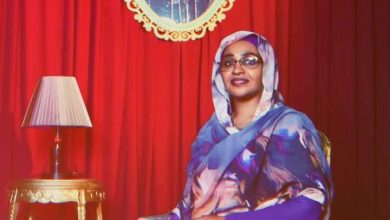From the Memory of Sudanese Theatre. Mastaba’s play: The Last Dance

Al Sir AlSayed
Mastaba: I am satisfied with your judgment, Father. I am satisfied with your judgment.
Shalit: This is not my rule.. It is the rule of the ancestors.. They issued their orders against this bad blood.
Mastaba: Father, I will dance until my blood runs dry… until the earth drinks every drop… until the rhythm declares that death is something ordinary, like love, like birth, like madness.
This play was published as part of five Sudanese theatrical texts, published by the Department of Culture and Information, Government of Sharjah, in the year 2010 in a book entitled (Theatrical Texts).
The play was written by writer and director Atta Shams El-Din, who is considered one of the distinguished new generation of playwrights. He wrote and directed many plays in Port Sudan, his home city, and in Khartoum.
He also participated in local theatrical festivals and some Arab festivals, and what should be noted here is his employment in some of his performances.
For actors from Port Sudan and actors from Khartoum, he was also called an “author-director,” as he used to direct his own texts, and among his performances we mention the plays, “The Observer’s Lamp,” “Birds Speak Secretly,” “Sheikh Barghouth’s Boat,” “The Oven,” and “Mastaba…The Last Dance.” And “The Story of the Sons of Malaus and the Locusts,” written by Adel Saad.
In this space, I will present a general approach to the text (Mastaba…The Last Dance).
This text, packed with directing instructions, contains seven characters in addition to a group of dancers.
The characters are Mastapa, the beautiful village girl who rejects the priest’s superstitions and his exploitation of customs and traditions, Katiang, the strong young man, Mastapa’s fiancé and her partner in confronting the priest, Shalit, the tribe’s priest and the one controlling her, Mammo, the old woman who adheres to outdated traditions, and Abai, Mastapa’s father, and one of the believers. With the priest, Makwar, and Lino, who are the priest’s followers, the ritual priest, and the group of dancers.
This text takes its distinction from the fact that it tried to tell about the other side of Sudan, which is represented by its African dimension, and in this way it adds to the very few Sudanese theatrical experiments that followed the same doctrine, such as the play “The Tragedy of Yarul.”
It also takes its distinction from the fact that it contained am
many big characters imposed by the nature of the subject and its location.
The African place, particularly in the villages, is characterized by collectivism and noisy movement because it is essentially ritual.
The ritual cannot be without celebration, and the celebration cannot be without the presence of collectivity.
Perhaps for this reason, I can say that this text was written in a way that would not be complete without the presence of other factors of presentation along with speech, such as movement, light, and darkness. And the décor, the music, the costumes, and this, of course, does not prevent us from emphasizing that the text, with its structure, in which the directing instructions occupy an important space, is able to a large extent to convey the general atmosphere of the story and to reveal any role that the culture of sacrifice can play in making a person capable of sacrifice, to the extent that it is exploited.
Priests, religion and customs, to the extent that their end is due to some of those concepts and beliefs that they promote, Mastaba’s death as a sacrifice for her fiancé and for her family is what will form in the future the culture that rejects the dominance of the priesthood and the exploitation of beliefs, customs and traditions, and here it can be said that there is some similarity between Mastaba… The Last Dance and the play “The Tragedy of Yarul” by Al Khatim Abdullah.



